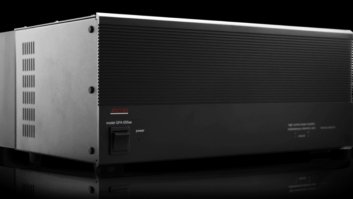SAN MATEO, CALIF. — Eleven years in, GoPro, innovator of the action video camera category, reigns as the most disruptive force in consumer camcorder marketing since Flip pocket video cameras made a fleeting flash in the sky.
But while Flip was acquired by Cisco and ultimately crushed by low margins and advances in the smartphone market, GoPro is going strong behind its takeanywhere weather-proof design that makes it hard for smartphones to keep up.
They also leverage the Internet-anywhere capabilities of smartphones and tablets by linking via Wi-Fi to those devices in various camera configurations. The company’s latest offerings — the Hero 3 series, which has been going strong since its debut in November 2012 — use a wireless link to a smart device to let the camera do the heavy lifting while the phone stays safe and dry.
GoPro is a privately held company based here that was founded by Nick Woodman, a surf-loving entrepreneur who was looking for an inexpensive camera to take with him into the waves.
GoPro is 8.88 percent owned by Foxconn, the Taiwan CE manufacturer owned by Hon Hai Precision and noted as the maker of many consumer electronics devices, including iPhones.
The company launched its first cameras in 2004, and they quickly caught on with car racers and extreme sports enthusiasts looking to capture their stunts from their own point of view.
According to market analyst Chris Chute of IDC digital imaging research director, in 2012, GoPro topped the overall U.S. camcorder market with 26 percent share, and it led the U.S. pocket video segment with 37 percent share (most of the pocket segment is now POV models).
“We expect the POV segment to be the sole growth market in the video category moving forward, as wearable computing devices begin to penetrate more mainstream consumer markets,” Chute told TWICE.
Today, GoPro cameras have mushroomed out beyond the initial base of hard-core extreme sports enthusiasts to average folks capturing family shots around the house.
Jonathan Harris, GoPro worldwide sales VP, said the secret to the success was the concept itself — a broadcast-quality high-definition camera selling at a consumer-friendly price point and with a size and weight that allows taking movies and stills anywhere.
Harris said GoPro action cameras are distributed in 90 countries around the world, mostly using a distribution network outside of the United States, and most direct service within the country.
GoPro works with three general classes of retail trade — specialty retailers, which it defines as surf, bike and dive shops that don’t traditional sell electronics; sporting-goods retailers, including Sports Authority, Dick’s and Academy; and traditional CE retailers, such as Best Buy, Target and select Walmart locations across the United States.
“We have most the big national chains covered, and we’ve been opening those over the past year to year-and-a-half,” Harris said. “We pretty much have the lion’s share of [retail distribution] coverage today. Now it’s on to our merchandising and marketing to reach the target with the key retailers.”
The company sees significant growth potential ahead, Harris said, adding: “We aren’t even over 50 percent awareness levels with our key verticals. The rest of the world is just starting to hear about this, and we are starting to reach a broader audience.”
He continued, “We have very aggressive growth targets and we haven’t seen any signs of a slowdown to date.”
Harris said GoPro works closely with retailer partners on merchandising displays “to help sell the Go- Pro experience,” preferring stand-alone end caps or dedicated merchandising areas to being mixed in with the traditional shooting gallery.
GoPro’s merchandising displays often play up videos shot with the cameras to generate excitement and impulse purchases. Showcasing the camera, content and accessories together “have been the keys to our success,” Harris said.
“When people see the type of content that you can shoot with GoPro, their intent to purchase goes up dramatically,” he continued, adding that GoPro is no longer limited to only shooting POV action videos. “People now are turning around and making it their `me’ camera for everything they are trying to do.”
GoPro continues to build on its brand with socialnetworking sites, web spots and national television advertising, including a popular user-generated video of a baby wearing a GoPro camera strapped to his head as his father tosses him into the air. The clip was turned into a commercial for the last Super Bowl.
What’s next from GoPro? Harris isn’t saying, citing the company’s privately held status and its history of launching new models in a giant wave of international media announcements.
The current flagship of the Hero 3 line is the Black Edition ($400 suggested retail), offering 12-megapixel still resolution, waterproof case to 197 feet, ultra-wideangle asperical six-element lens, Wi-Fi, enhanced audio performance and a 30 percent smaller/25 percent lighter body.













